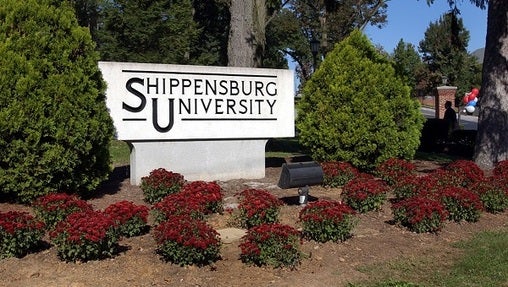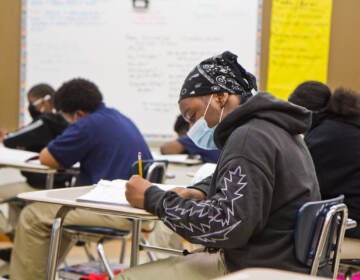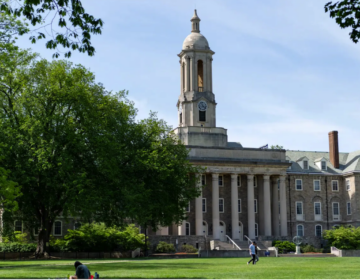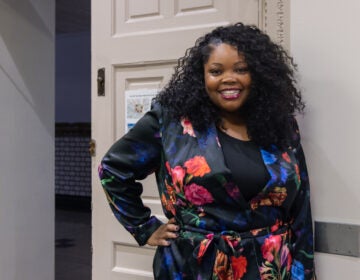Pa. university system pledges to transform amid struggles, enrollment drop
The system of 14 universities had asked for an increase of almost $38 million, or 8 percent. Last week, Gov. Tom Wolf proposed an increase of $7 million, or 1.5 percent.

Shippensburg University is one of the 14 schools that make up the troubled Pennsylvania State System of Higher Education system. (AP photo)
Leaders of Pennsylvania’s state-owned university system promised lawmakers a transformation amid declining enrollments and rising costs, as well as lackluster state support that skeptical Republican lawmakers suggested Tuesday was not a coincidence.
The hearing before the House Appropriations Committee came after the fall enrollment at the Pennsylvania State System of Higher Education fell below 100,000 for the first time since 2001. Public university systems in many states face similar challenges, including declining high school graduation numbers and stagnant post-recession state aid.
“The challenges that we’re facing here in Pennsylvania, they’re not unique, they’re just super acute,” said Dan Greenstein, who took over as system chancellor last fall. “They’re … more acute than they are, really, pretty much anywhere, so a lot of folks are watching, and there’s a lot of interest in what we’re doing because win, lose or draw, there’s going to be a lot of lessons learned.”
Enrollment growth, Greenstein suggested, could come from serving adults who need to retrain or want to upgrade their skills in a competitive economy.
Pennsylvania’s 14-university system, one of the nation’s largest by enrollment, is at a disadvantage with many campuses in relatively rural areas trying to compete with urban powerhouses such as Temple University or the University of Pittsburgh, or Penn State and its satellite campuses.
Greenstein freely acknowledged that Pennsylvania has an overcapacity in higher education. Still, Greenstein rejected the much-discussed idea of closing one of the 14 universities. Rather, he said he hopes to overhaul the system into one where the universities share administrative resources, avoid duplication in offerings and provide courses more neatly aligned to demand.
The system is bracing for a continued demographic crunch, as the number of Pennsylvania’s high school graduates is projected to keep falling. Meanwhile, Pennsylvania’s state support, at 27 percent of the system’s budget, is about half the proportion of the national average for state schools, the system said.
Greenstein fielded questions from a number of skeptical lawmakers. One of them, House Appropriations Committee Chairman Stan Saylor, R-York, told Greenstein that lawmakers have “lost faith” in the system.
The system was created for poorer and middle-class families, but it hasn’t lived up to that, Saylor said.
“In many cases, you can go to other schools at a cheaper cost than you can to our state PASSHE system, and we have to get back to that if we want the system to survive,” Saylor said.
A full year’s tuition is $7,716, which the system bills as the lowest among all four-year colleges and universities in the state, and less than half that charged by most others.
The system had asked for an increase of almost $38 million, or 8 percent, which Greenstein had called a “cost to carry” request. Last week, Gov. Tom Wolf proposed an increase of $7 million, or 1.5 percent, to $475 million, which would leave the system receiving less than it did in the 2006-07 school year.
Wolf, meanwhile, proposed a $50 million increase for the Pennsylvania Higher Education Assistance Agency, which gives voucherlike grants to students to help pay for tuition at about 90 qualified private colleges and universities in Pennsylvania.
Filling the system’s budget gaps with tuition increase carries hazards.
Greenstein warned that the system is close to hitting the tuition ceiling for its core group of students, saying enrollment from families with income under $110,000 has dropped steeply.
Rather, Greenstein suggested that the system’s board consider raising tuition for higher-demand disciplines.
WHYY is your source for fact-based, in-depth journalism and information. As a nonprofit organization, we rely on financial support from readers like you. Please give today.




